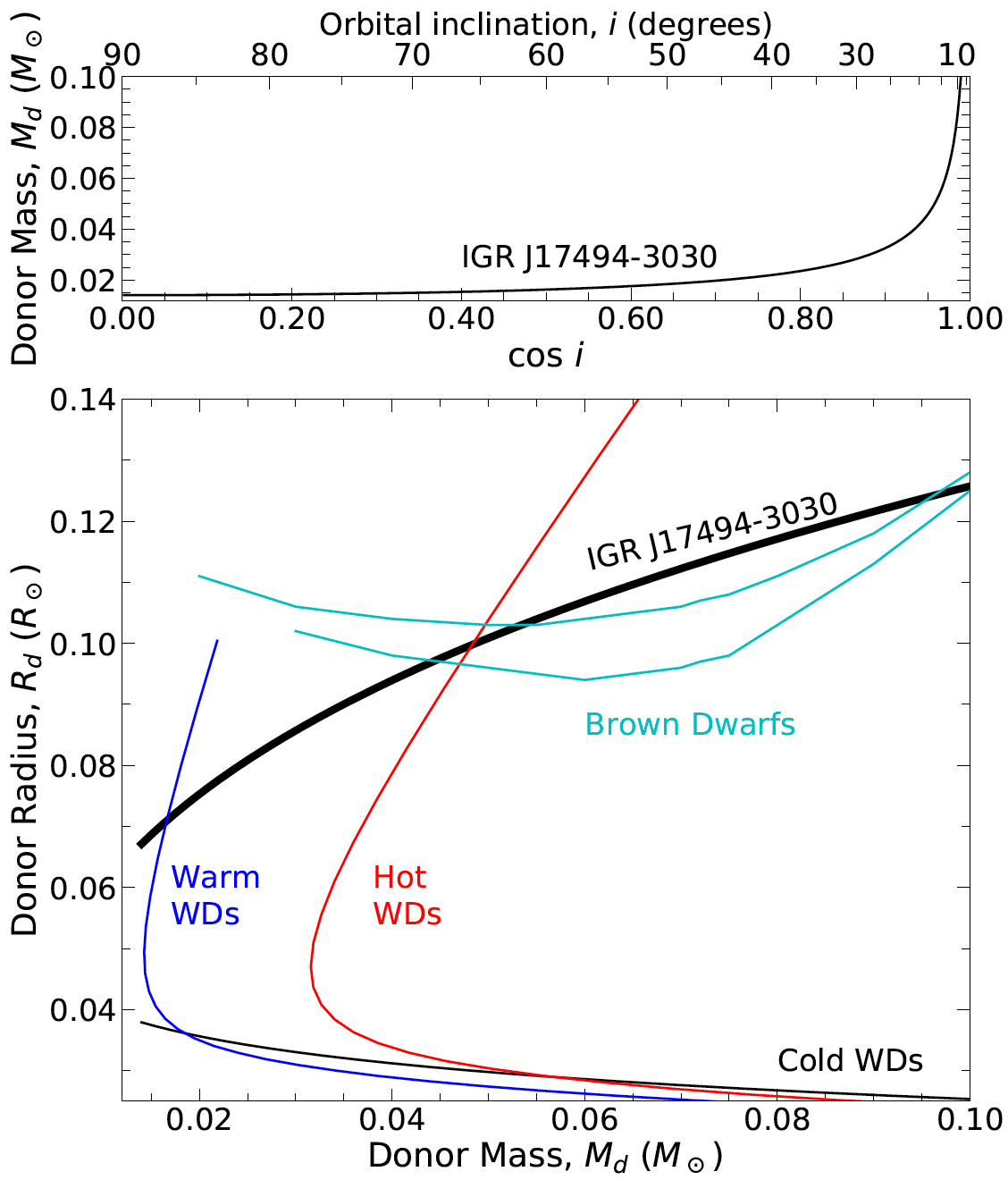NICER / ISS Science Nugget
for February 4, 2021
NICER constrains the nature of the companion star in IGR J17494-3030
Following NICER's discovery of X-ray pulsations from IGR J17494-3030 (reported here 29 October, 2020), NICER continued observations for another week until the Sun obscured the source. These measurements confirmed that IGR J17494-3030 comprises a pulsar, spinning 376 times each second, in a 75-minute orbit with a low-mass companion star.
Bodies in binary orbits define "Roche lobes," regions around each body beyond which material will no longer be gravitationally bound to that body, and may flow toward the other body in the system. In ultracompact binary systems such as IGR J17494-3030, material is transferred from the companion (the donor star) onto the pulsar as the companion fills its Roche lobe, which happens when the orbit shrinks - leading to smaller Roche lobes - due to the emission of gravitational waves. With this formalism, a mass-radius constraint diagram can be constructed (see figure). The NICER team infers that the companion star in IGR J17494-3030 is likely a warm or hot (~millions of degrees) white dwarf, a type of compact star supported by electron degeneracy pressure, with a mass approximately 2% that of the Sun. The companion could also be a brown dwarf, another type of "degenerate" object, but this is less likely.
This analysis was led by graduate student Mason Ng (MIT), and the work was accepted this week for publication in The Astrophysical Journal Letters.

Figure: The top panel shows the donor star mass as a function of the unknown orbital inclination, which is defined as the angle between our line of sight and the orbital angular momentum vector. The probability distribution for inclination is uniform in cos i, so low masses and higher orbital inclinations are likeliest. The bottom panel shows mass-radius constraints for the donor star. The thick black curve is the mass-radius constraint for a Roche-lobe-filling donor from NICER's orbital measurements of IGR J17494-3030. The thin black line shows cold white dwarf models. The blue and red lines show representative "warm" and hot white dwarf models, respectively, with central temperatures of approximately 5 and 10 million degrees. The solid cyan curves show brown dwarf models for ages 0.5 (top) and 1.0 billion years (bottom). Any stellar model curve that intersects with the thick black curve represents a candidate type for the companion object. Combining the information from both panels, a low mass (~0.02 solar masses) inflated white dwarf is likely the companion object in the system.
<< Previous
Main Index
Next >>